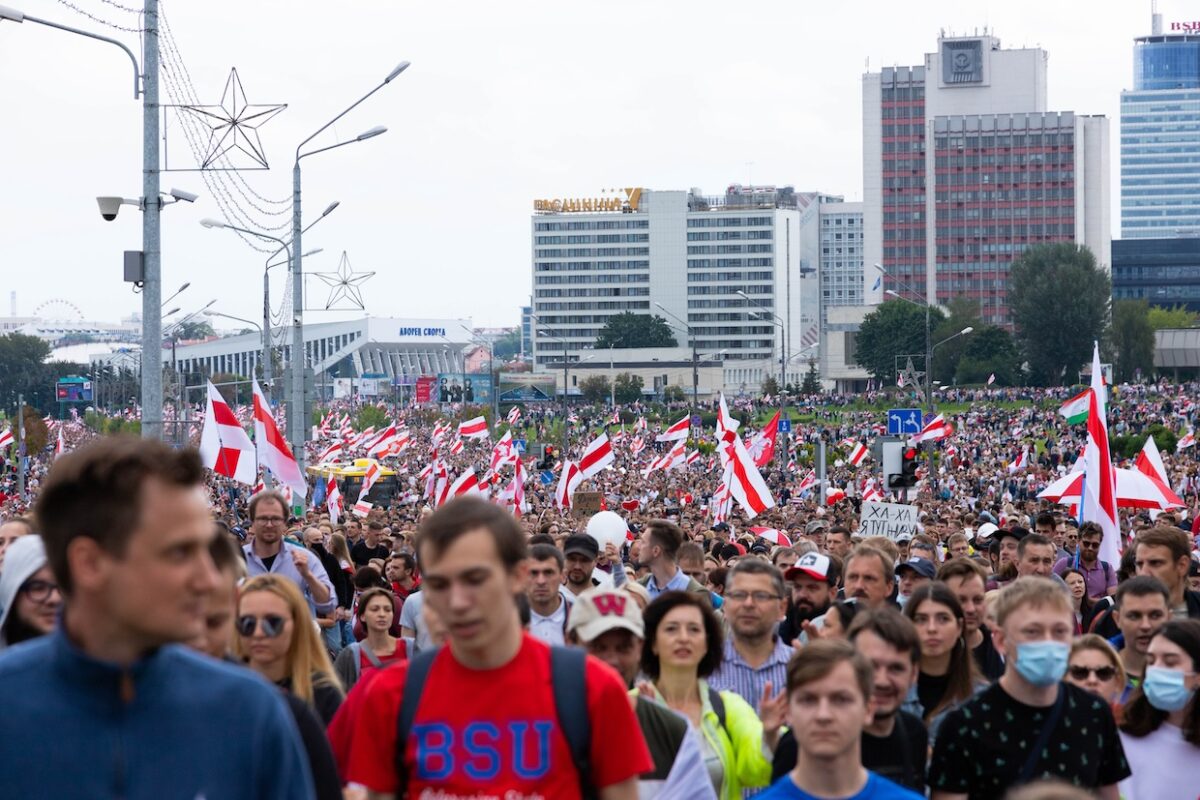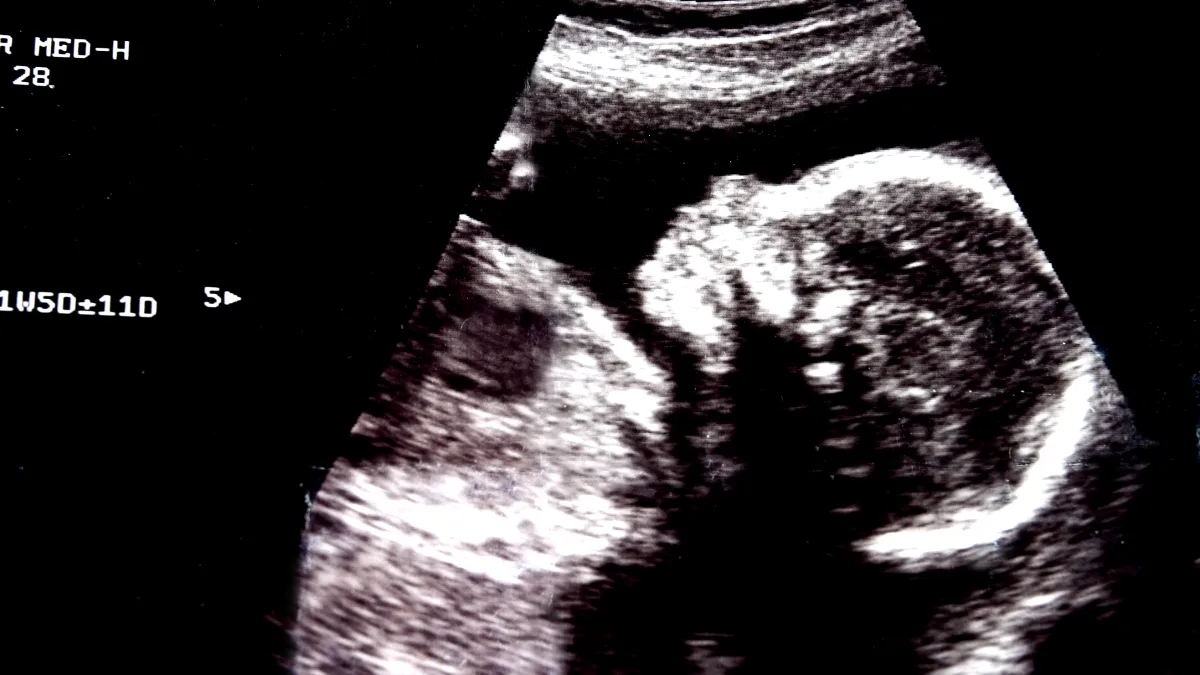A presidential election in Belarus in August 2020 saw Alexander Lukashenko claim an implausible landslide victory, a result met with scepticism and allegations of electoral fraud from both domestic opposition and international observers.
The immediate aftermath was marked by massive protests across the country, with citizens demanding free and fair elections and the end of Lukashenko’s three decades in office. The government’s response was swift and brutal, marked by widespread police violence, thousands of arrests, and repression of all dissent.
Svetlana Tikhanovskaya, the main opposition candidate and likely rightful winner of the election, quickly emerged as a symbol of the resistance. Her election campaign galvanised support across the country, drawing attention to the need for democratic reforms and the protection of human rights.
Despite the regime’s efforts to quash dissent the protests continued for months, showcasing the Belarusian people’s resilience and determination to seek change.
Exile or prison
In the four years since the election, the Belarusian government has intensified its crackdown on opposition, independent media, and civil society.
Prominent opposition figures, including Tikhanovskaya, who now lives in neighbouring Lithuania, have been forced into exile or imprisoned. The regime’s tactics have included internet blackouts, disinformation campaigns, and legislative measures to stifle any form of dissent.
The Lukashenko regime has continued to employ harsh measures to maintain its grip on power. New laws have been enacted to curb freedom of assembly and expression, and the state’s security apparatus has been expanded to monitor and control the population more effectively.
Journalists and activists face constant threats, with many being detained or driven into exile. According to Freedom House, a human rights group, more than 1,400 people officially recognised by Belarusian rights defenders as political prisoners remain behind bars – including Tikhanovskaya’s husband, Sergei Tikhanovsky.
Internationally, Belarus has faced sanctions from the European Union and the United States, aimed at pressuring the Lukashenko regime to engage in dialogue and reform. However, these measures have had limited impact, with Lukashenko maintaining strong ties with Russia, which has provided both economic and political support.
The economy adapts
Lukashenko’s support for the 2022 Russian invasion of Ukraine made Belarus the target of further Western sanctions, targeting its petrochemical industry, production of fertilisers, banking, financial services, and transport.
The new sanctions reoriented even more trade away from Europe towards Russia and China.
However, from what can be deduced, Belarus still exports timber, oil, metal, and metal products to the European Union and imports transport equipment and pharmaceuticals. However, total exports to the EU appear to have dropped by around 52 per cent in 2022 from the previous year while imports dropped by 15 per cent.
Sanctions have directly affected a quarter of Belarus’s economy, and the production of one of its most important exports—potash fertiliser—has fallen by more than 50 per cent since 2021. Thousands of skilled professionals have left the country.
As the destination for 17 per cent of Belarusian exports, Ukraine had been Belarus’s second-largest export market, but due to Minsk’s support for Moscow’s invasion, Belarus has lost almost total access to the Ukrainian market.
To maintain Minsk’s support for its war and soften the blow of Western sanctions, Russia has offered considerable economic backing—new lines of credit, highly preferential prices for oil and gas supplies, and the rescheduling of some financial obligations—and absorbed most of what Belarus used to export to Ukraine.
This has helped soften the blow of sanctions. According to the Vienna Institute for International Economic Studies (wiiw), recent short-term indicators suggest that after slowing down towards the end of 2023, economic performance in Belarus strengthened at the beginning of 2024: in the first quarter, GDP grew by 4.1 per cent year on year and industrial output surged by 6.5 per cent.
“Moreover, all indicators point to a broad-based recovery that is also to be observed in agriculture, construction and the services sectors – including, for the first time since 2022, the ICT sector,” notes wiiw.
“Because of the very tight labour market and the reported labour shortages in many industries, real wages and disposable incomes have kept on rising. Consumer prices have also been increasing, reversing the prevailing trend of 2023. The embargo imposed back in 2022 on the publication of certain important statistics (especially regarding the composition and direction of foreign trade) precludes any more detailed assessment of the drivers of the current upswing but most likely, local manufacturers and exporters benefited from the strong upturn in Russia at the start of 2024. In addition, domestic policies remained accommodative and various forms of additional support from Russia were still in place.”
Taking account of these recent developments, wiiw expects the Belarusian economy to grow by 3.5 per cent in 2023.
‘Democratic Belarus is its people’
Politically, Belarus remains in a state of stagnation. Human rights organisations continue to report abuses, and the space for free expression is severely limited. The opposition, though largely silenced within the country, remains active in exile, advocating for democratic change and maintaining international awareness of the situation in Belarus.
The economic situation in Belarus is dire, with inflation and unemployment rates soaring. The sanctions have cut off many avenues for economic growth, leading to a decline in living standards. Despite these challenges, Lukashenko’s government has managed to maintain a semblance of stability through strict control measures and the support of a loyal security apparatus.
The future of Belarus is uncertain. While the current regime shows no signs of relinquishing power, the resilience of the Belarusian people and the persistent efforts of the opposition provide a glimmer of hope. The international community’s role will be crucial in supporting democratic forces and ensuring that human rights abuses do not go unnoticed.
The potential for change in Belarus hinges on several factors. Internally, the ability of the opposition to maintain momentum and adapt to the repressive environment is critical. The younger generation, who have been at the forefront of protests, continue to advocate for a more open and democratic society. Their determination and adaptability may eventually erode the regime’s grip on power.
Externally, the role of Russia remains a significant variable. While Russia’s support for Lukashenko has so far been unwavering, any shift in Moscow’s stance could dramatically alter the political and economic landscape in Belarus.
For Belarus, the path to democracy is fraught with challenges, but the desire for change remains undiminished. The coming years will be pivotal in determining whether the country can break free from its authoritarian past and move towards a more democratic future. A presidential election next year will likely see Lukashenko re-elected, opposed only by pliant, token ‘opposition’ candidates.
He is unlikely to make the mistake of allowing a galvanising force such as Tikhanovskaya to stand again.
What’s clear is that the continued engagement and support of the international community, coupled with the unwavering spirit of the Belarusian people, will play a crucial role in shaping the nation’s trajectory.
Indeed, just last week, at a conference of opposition leaders in Warsaw, Tikhanovskaya said that, “Democratic Belarus is its people”.
During her speech, Tikhanovskaya also announced increased support for political prisoners, a new campaign to strengthen international support for Belarus, and initiatives to help repressed Belarusians. She also expressed her unwavering support for Ukraine’s territorial integrity.
“We have no right to say: ‘We failed, we are giving up’,” she said. “We have no right to let down all those who remain in prison. We have to fight for their liberation every day. Political prisoners are our common pain. My heart breaks when I listen to their stories.”
The struggle for democracy in Belarus is far from over. But the legacy of the 2020 election serves as a stark reminder of the lengths to which an authoritarian regime will go to maintain power.
However, it also highlights the enduring strength of a populace committed to fighting for their rights and freedoms. As the world watches Ukraine, the struggles of neighbouring Belarus continue largely untold.







